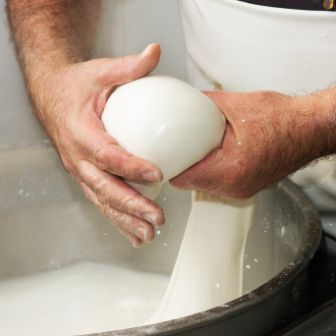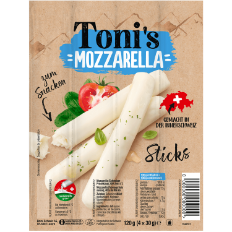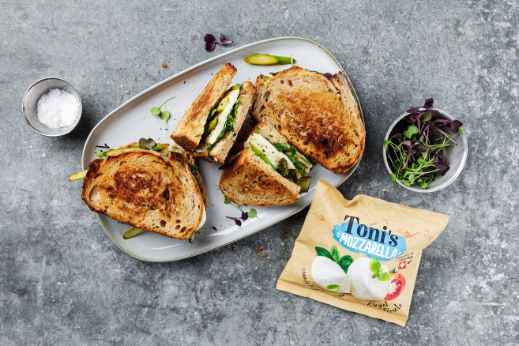
The number one cheese: mozzarella
The most popular cheese in Switzerland isn’t Emmentaler, Tilsiter or Gruyère. Mozzarella beats them all, particularly in summer when people like to eat Mediterranean-style food. But it is actually an oddity among cheeses.
Mozzarella is a cream cheese, has a neutral flavour and is especially beloved in tomato salad or on pizza. That’s about it. Well, no. There’s far more to it than that of course – starting with the fact that, thanks to its “stringy” structure, mozzarella looks totally different from other cheeses. The peculiar consistency is closely linked to the production process. After coagulating the milk and making the curd, it is blanched in hot water at around 80°C, kneaded and stretched (spun). This makes mozzarella a “pasta filata” cheese. The term comes from the Italian verb “filare” (“to spin”, “to draw out”).

The same for generations
It is then cut into pieces and shaped into balls, pearls or sticks. And now for another little Italian lesson: “mozzare”, the verb that the cheese gets its name from, means “to cut off”. Originally, the cheese was made entirely by hand, begging the question as to how cheesemakers in the past did so at such high temperatures. Hardy fellows indeed! Today, special machines carry out the kneading. But the principle behind the manufacturing process has remained the same for generations.

A lot of stamina when kneading
And why is mozzarella stringy? The combination of protein coagulation in the hot bath, mechanical processing and heat creates this special “cooked chicken-like” structure, which is a distinctive quality feature of a carefully produced mozzarella. Achieving this structure takes a lot of stamina when kneading – whether with muscle power or modern technology.
Freshly and carefully produced
Making a really good mozzarella requires high-quality fresh milk and careful production. This is how a product comes about, such as Toni’s Mozzarella, which is made in Dagmersellen – from milk from local cows.




